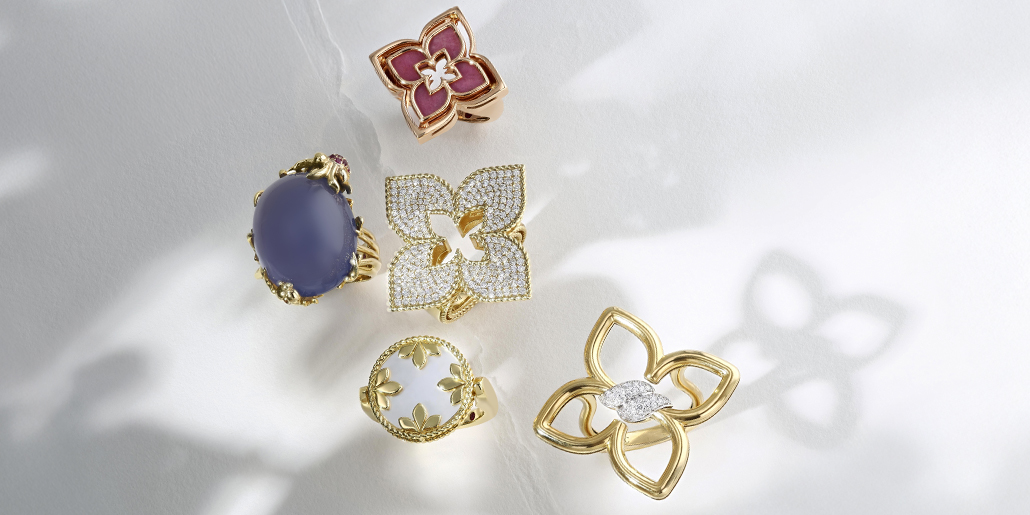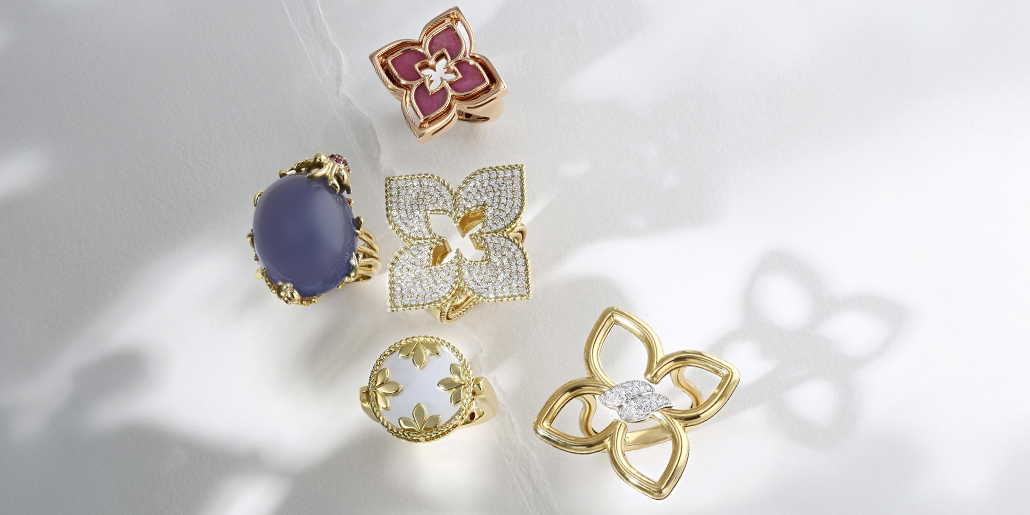A flash of color, a glint of gemstone and pure extravagance perched right on your finger—the cocktail ring is one of the most expressive pieces you can own.
In this guide, we’ll explore the meaning behind these dazzling rings, what makes them so distinctive and how you can choose the perfect one for your style. You’ll also get practical tips for styling and caring for cocktail rings.
What Is a Cocktail Ring?
A cocktail ring is a large, ornate ring that typically features a prominent central gemstone or an elaborate design. Unlike engagement or wedding rings, cocktail rings are meant purely for fashion. They often showcase oversized diamonds, colored gemstones like sapphire, emerald or amethyst or even intricate metalwork and pavé settings.
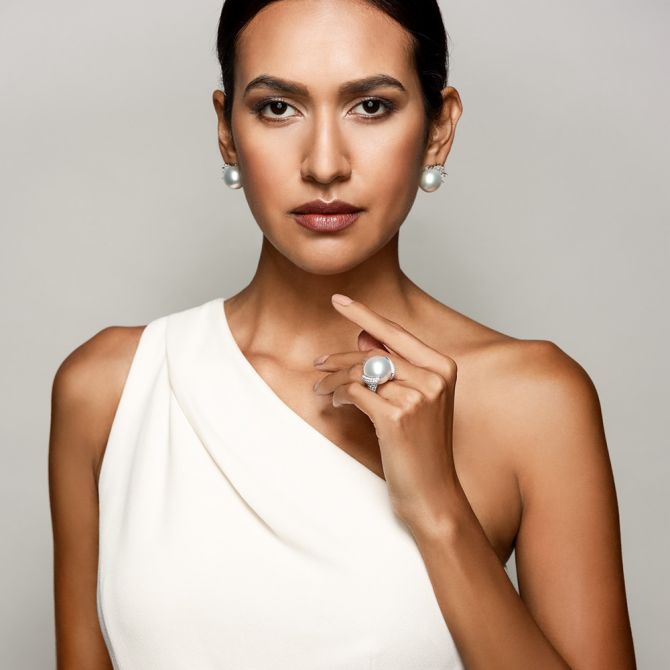
The story of the cocktail ring begins in the 1920s during the Prohibition era in the United States. It was a time of great social change, marked by secret cocktail parties, lively jazz music and a rebellious spirit. Women, newly empowered by the right to vote, embraced greater freedom in both fashion and lifestyle, and their jewelry reflected this newfound confidence.
At underground speakeasies and cocktail parties, women would wear large, flashy rings on their right hand. When they held their cocktail glass, the ring would be prominently displayed. The earliest cocktail rings were often made with large gemstones like aquamarine, amethyst and citrine, surrounded by smaller diamonds and set in platinum or gold. They were an unapologetic celebration of glamour, individuality and freedom.
Cocktail Ring Features
While there are no set rules, certain characteristics define a classic cocktail ring. Understanding these features will help you identify one and choose a piece that truly stands out.
The most defining feature is its size. Cocktail rings are intentionally large and three-dimensional. They rise high off the finger and often feature a substantial central element. The goal is to be noticed, so subtlety is not part of the design philosophy.
Many cocktail rings are built around a large central gemstone. The cut of the stone is often designed to maximize its brilliance and size, with popular choices being cushion, emerald or oval cuts.
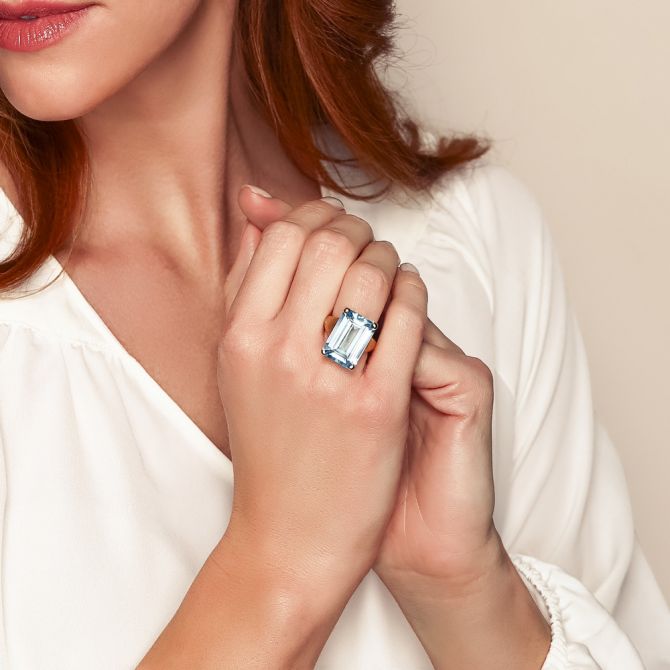
Beyond a single large stone, cocktail rings can feature inventive, artful designs such as:
- Clusters: Arrangements of smaller stones that create a textured surface.
- Halo settings: A central gemstone encircled by a ring of smaller gems for more sparkle.
- Abstract forms: Sculptural designs inspired by art, nature or geometry, often combining mixed metals and vibrant color contrasts.
How to Wear a Cocktail Ring
- Hand placement: Traditionally, cocktail rings are worn on the right hand to distinguish them from engagement or wedding rings. But comfort and style rule, so try the index or middle finger if you’d like. Learn more about how to wear your rings in our guide.
- Accessorizing: Pair your statement ring with understated jewelry, think delicate necklaces or stud earrings, to keep the balance. If you add a bracelet, wear it on the opposite wrist to maintain harmony.
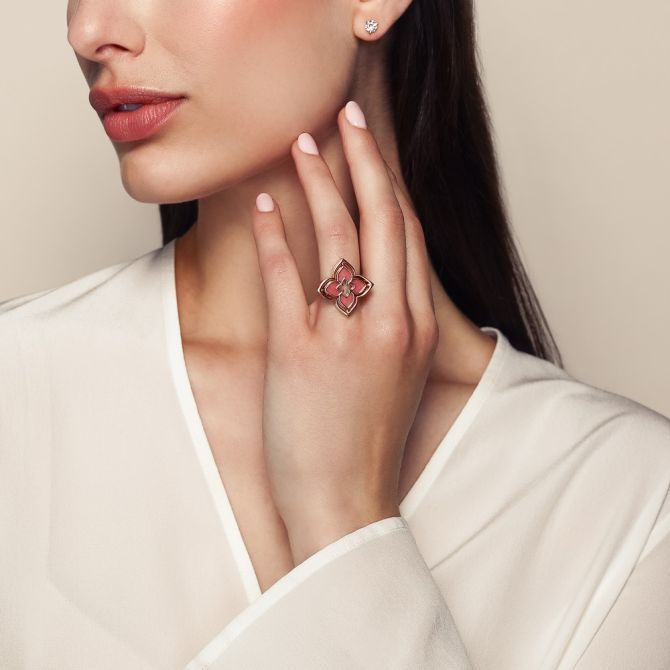
Cocktail Ring Care
Keeping your ring brilliant for years to come is simple with a few regular practices.
- A mix of mild dish soap and warm water is usually all you need. Don’t use harsh chemicals or abrasive products.
- Always store your cocktail ring separately in a lined jewelry box or a soft pouch. This will prevent scratches and protect delicate settings.
- Due to their size, cocktail rings can be more susceptible to damage. It’s best to remove them during exercise, chores, swimming or whenever harsh chemicals are present to maintain both the stones and metal’s integrity.
Cocktail Ring FAQs
Can a Cocktail Ring Be an Engagement Ring?
Absolutely. If it speaks to your style and love story, a cocktail ring can make an original and meaningful engagement choice.
Can You Wear a Cocktail Ring Every Day?
Yes, but be mindful of the setting and stone, and save your most elaborate pieces for special occasions.
What Finger Does a Cocktail Ring Go On?
Traditionally, cocktail rings are worn on the right hand, often on the index or middle finger, but ultimately it depends on your comfort and personal style.
